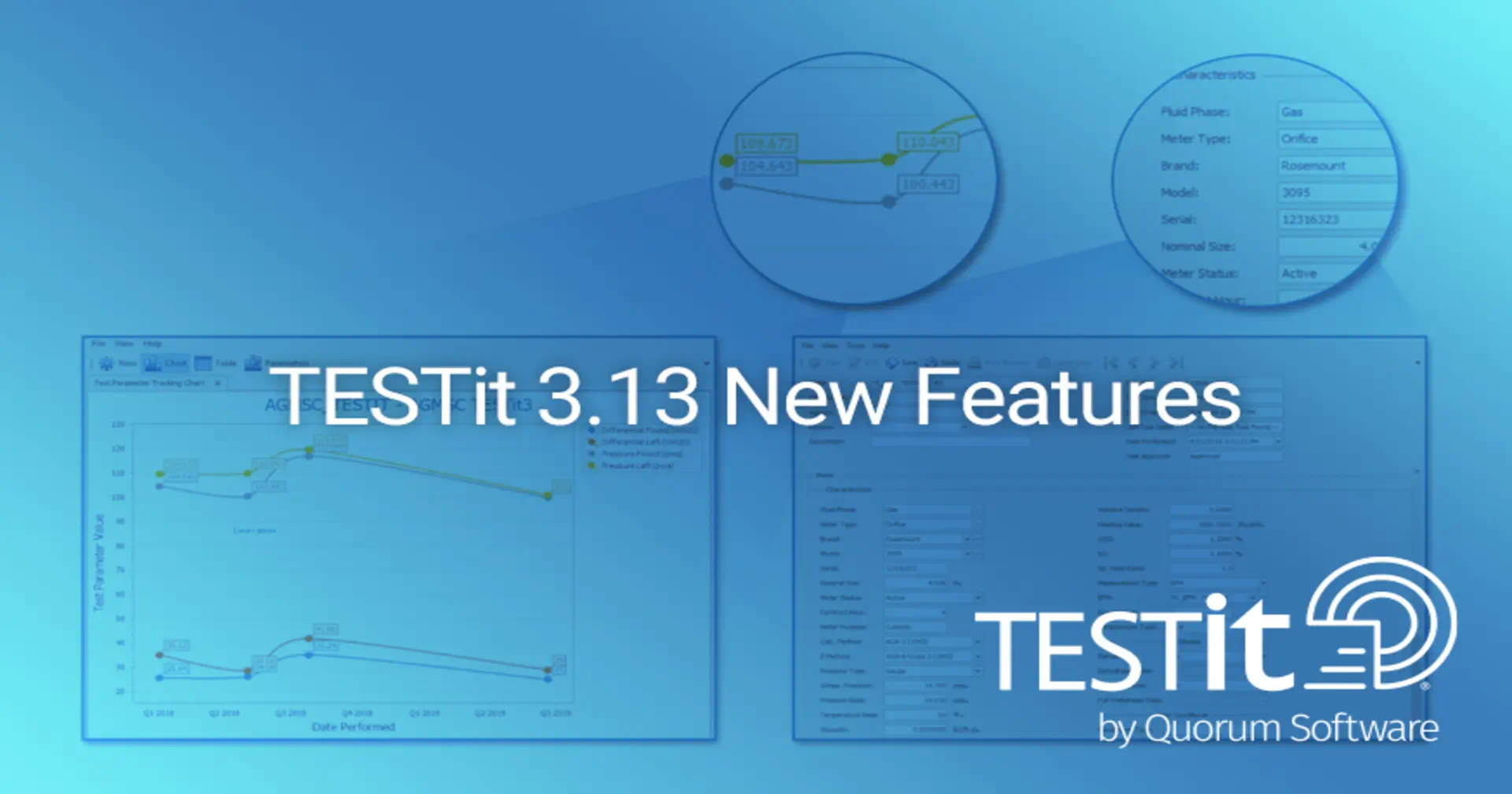Over the last decade, a growing focus has been placed on automating processes to operate more efficiently and effectively with fewer resources. For many roles, that may involve expanding responsibilities across departments. Still, more commonly, the initiative is identifying opportunities where routine and manual tasks can be managed by implementing or better utilizing existing systems to make data-driven decisions. Quorum’s Measurement Field Applications have provided this opportunity for automating the field task data and managing the growing demands of operational efficiency.
As additional tasks become part of a technician’s routine responsibility, we continue to focus on providing support within our Field Applications for the evolving role of various field measurement personnel. Our latest version of Field Applications, TESTit 3.13 / PROVEit 9.13 / PYCit 3.13, was released earlier this year. Our project list for the latest release reflected our commitment to continuously expand functionality and support to the industry, and many of the top features include new standard forms to meet the evolving role of the customer base. Measurement-related tasks, outside of meter inspections and sampling, can vary between industry segments. An area of opportunity identified within TESTit was the limited offering of applicable tasks commonly performed in the LDC segment. In alignment with one of our Professional Service’s projects where FLOWCAL and TESTit were being implemented for an LDC customer, we were able to provide them functionality to perform and manage their maintenance activities for regulator stations, chemical injection points, and odorant testing. These additions were designed to support common LDC tasks but implemented to ensure the new features would be versatile enough to apply to Upstream and Midstream customers as well.
Throughout the industry, operating companies are responsible for monitoring and maintaining safe working pressures to avoid exceeding equipment limitations. This operational responsibility applies to upstream producers with everything from wellhead separators to compressor stations, to midstream companies on transmission lines to gathering stations, and LDC companies on regulator stations. The Regulator Station Inspection form was added as a standard form to provide the technician what they need when performing inspections or maintenance on pressure regulating equipment. The task provides fields to capture key information on regulators, relief valves, and critical valves. This feature offers the ability record and track characteristics, inspection, and operating conditions, as well as provide the regulators and relief valves calculated capacity results. The calculation to determine the capacity is specific per manufacturer and model. This standard form provides support for many of these capacity calculations specific to commonly used regulators and relief valve types within the industry. Ensuring adequate capacity in the event of an equipment failure within the regulator station is critical and a regulatory requirement in most applications. Emergency valve inspections play a key role in providing emergency protection for people, the environment, and process equipment. To support adequate tracking and maintenance records, an emergency valve inspection page is included as part of the Regulator Station Inspection.
Another common task performed among field technicians involves maintaining proper injection rates for various chemicals added to the product. The Chemical Inspection form was added as a standard form to monitor chemical injection inventory and calculate the injection rate. This form streamlines the process of monitoring chemical injection points and could be applied to odorant (mercaptan), h2s scavenger, corrosion inhibitor, and many more. This form can be used alongside tasks that require inventory tracking of primary and supply tank chemical quantities and provides the option of populating the throughput volume from monthly flow average data. If flow averages are not available or selected to determine throughput, other options include index difference and manual input. Built-in calculations will determine the injection rate once the required chemical and product information is populated. Chemical tank levels can be set and recorded in either a fixed or percentage reading type. The calculated injection rate can be displayed in either mass or volumetric unit types. Support for the chemical inspection task within TESTit helps ensure the product maintains the desired chemical content to avoid safety and financial implications. In addition to the chemical inspection form, a new standard page is available that can be added to a custom form to record task information when performing an Odorant Test. This provides the technician the relevant fields associated with determining the odorant content at a sample point utilizing an odorometer.
Along with the additional forms for supporting these critical tasks, this release also includes reports associated with each. The Regulator Station Inspection report is a task-based report that provides a detailed record of the equipment inspection information and operating conditions. The Chemical Inspection Report is also a task-based report that displays the date performed, Meter ID and name, quantity of chemical injected throughput, and injection rate. The Odorant Test report is a list-based report that can be generated from the report viewer and filtered by date range. This report allows the supervisor or analyst the ability to easily review the test date, device/location information, readily detectable reading, instrument make/model/serial, and pass/fail determination within a list view. Since these tasks are often a requirement of state or federal regulatory agencies, these associated reports simplify the process of providing documentation of inspection information, frequency, and results.
By utilizing TESTit to manage these inspection tasks, your company can verify all required task information is being recorded, the tasks are being performed at the required frequency, and compliance requirements are being met. As responsibility and demands of increase on companies and individuals throughout our industry, being able to streamline and automate processes and increase data access is vital. TESTit can provide your organization a solution to maintain safe and compliant operations effectively and efficiently, without the hassle of updating spreadsheets or maintaining outdated, in-house systems. For more information on this release, please watch our latest webinar.

 Previous Page
Previous Page